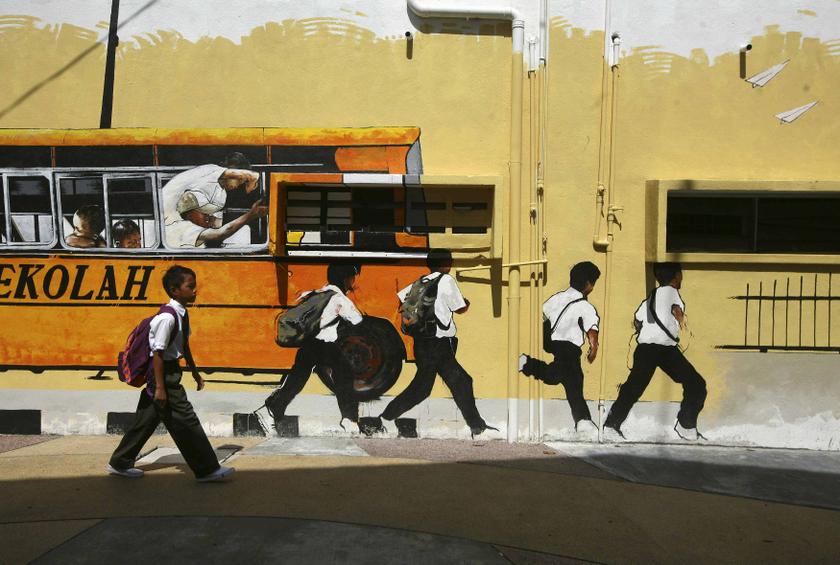KUALA LUMPUR, April 28 — An assistant hostel warden’s beating of an Islamic religious student which resulted in the amputation of the 11-year-old’s legs and his subsequent death on Wednesday may well be the most severe abuse case in schools in recent years.
Alleged abuses of schoolchildren by adults entrusted to teach and care for them have ranged from verbal to physical hurt to degrading treatment and public humiliation.
Here is a list of selected cases where students were reportedly abused:
1. Slapping cases
October 1, 2013 — Male teacher allegedly slaps 11-year-old boy for chatting and failing to pay attention in class, resulting in a ruptured eardrum. Police report subsequently lodged.
May 15, 2014 — Boy aged 10 claims teacher slapped him eight times with a plastic file and pressed a watch against his forehead, resulting in hospitalisation for almost one week due to headaches and dizziness. Police investigation conducted.
August 2015 — Teacher allegedly slaps 15-year-old boy, cuts off latter’s prayer threads and spits into water bottle before asking boy to drink from it. Police investigation conducted.
July 2016 — Teacher allegedly slaps 15-year-old girl thrice on the back of her head over suspicion of having shaved eyebrows, aggravating an old neck injury and causing her to be hospitalised.
2. Chair-throwing
April 2016 — Religious secondary school teacher loses job after throwing plastic chair at three students. Two are slightly injured in waist and head and given one to two days’ leave, while the third who has a fractured hand is given one-month leave.
April 21, 2017 report — A teacher loses his temper after a Standard Two boy fails to obey instructions to stay quiet in class, causing the teacher to throw a chair which hits another boy instead. Although eight stitches on the boy’s head are required, the parents decide against legal action after the teacher apologises.
After the latest incident, Deputy Education Minister Datuk P. Kamalanathan last Sunday said the majority of 450,000 teachers are exemplary, but those who suffer from depression and extreme stress are urged to seek counselling. He said about 200 sought counselling in 2016.
3. Ear-pinching
May 9, 2016 — Teacher allegedly pinches and bruises seven-year-old girl’s left ear. Police report lodged.
June 16, 2016 — Teacher allegedly pinches nine-year-old girl’s ear, charged on March 3, 2017 with voluntarily causing hurt.
4. Beatings
February 12, 2014 — Teacher allegedly punches Form One girl who accidentally splashed water on his clothes, and punches three others who had forgotten to bring notebooks.
March 2, 2016 — Teacher allegedly beats a 12-year-old boy for being late and riding a modified bicycle. The boy claims he was given RM2 to keep silent. Police investigation launched.
5. Caning
May 12, 2016 — Teacher allegedly canes 14-year-old boy, leaving marks that are still visible after two months. Police investigation conducted.
July 2016 — Stand-in ustaz canes three boys aged 10 who tried to run away from a private religious school’s hostel.
The Ministry of Education had in a 2003 circular to schools reminded educators of the Education (School Discipline) Regulations 1959 which only allows boys to be caned and requires well-documented canings, besides listing down three punishment categories depending on the severity of offences and examples of such disciplinary breaches by students.
A serious disciplinary breach can be dealt with a maximum three strokes of caning on a student’s rear separated by cloth layers, while a mid-level breach can be dealt with a maximum of three strokes on the palm. Minor offences such as arriving late, being noisy in class, failing to bring books or complete homework or not paying attention in class can only be dealt with via a warning and counselling sessions, the guidelines in the 2003 circular said.
Even in 1995, the ministry issued a circular after the occurrence of schools’ alleged excessive punishment such as making students stand under the hot sun, run in underwear, and pinching resulting in bleeding. The ministry reminded schools against flying into a rage and jumping to rash conclusions without proper investigation, also saying that torture and public insults should be avoided.
The ministry also said in a written May 24, 2016 parliamentary reply that canings, suspension and expulsion were to be punishments of last resort by schools, with the only other allowed disciplinary action being warnings, fines and detention.
On Tuesday, Deputy Education Minister Datuk Chong Sin Woon told Malay Mail Online that the Madrasah Tahfiz Al-Jauhar in Kota Tinggi whose student had died following abuse is a “private religious tahfiz school and is under the control of the Johor Islamic Religious Department”.
Yesterday, Education Minister Datuk Seri Mahdzir Khalid, in responding to proposals for guidelines to be drawn up for caning in religious schools, said that private religious schools must still comply with the ministry’s standard operating procedures.
“Private religious schools, whichever jurisdiction they come under, must abide by the ministry’s SOP whether in matters of discipline, welfare or responsibility of teachers and students,” he was quoted as saying by national news agency Bernama.



















